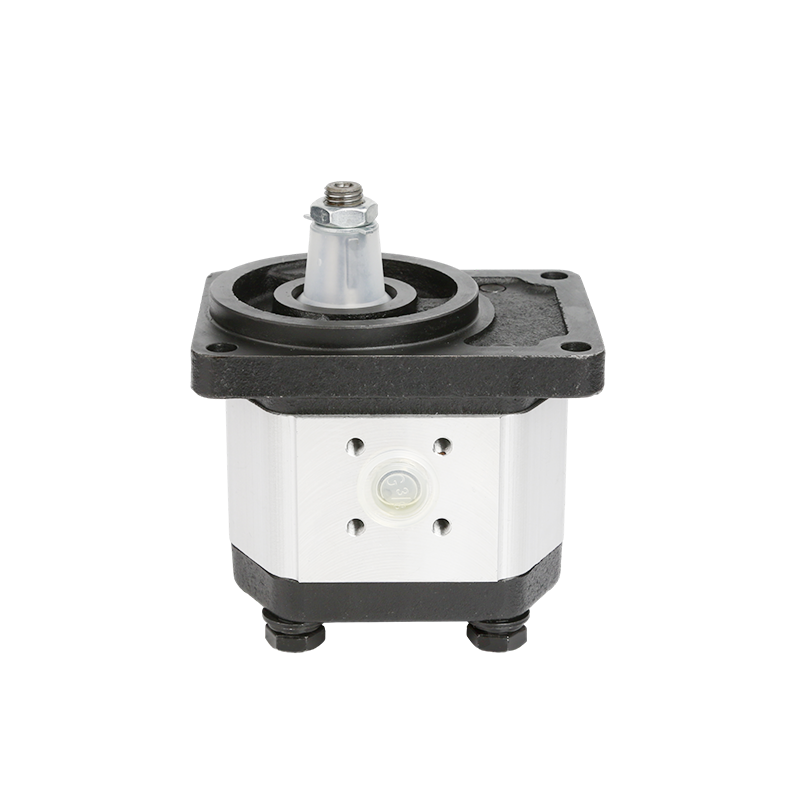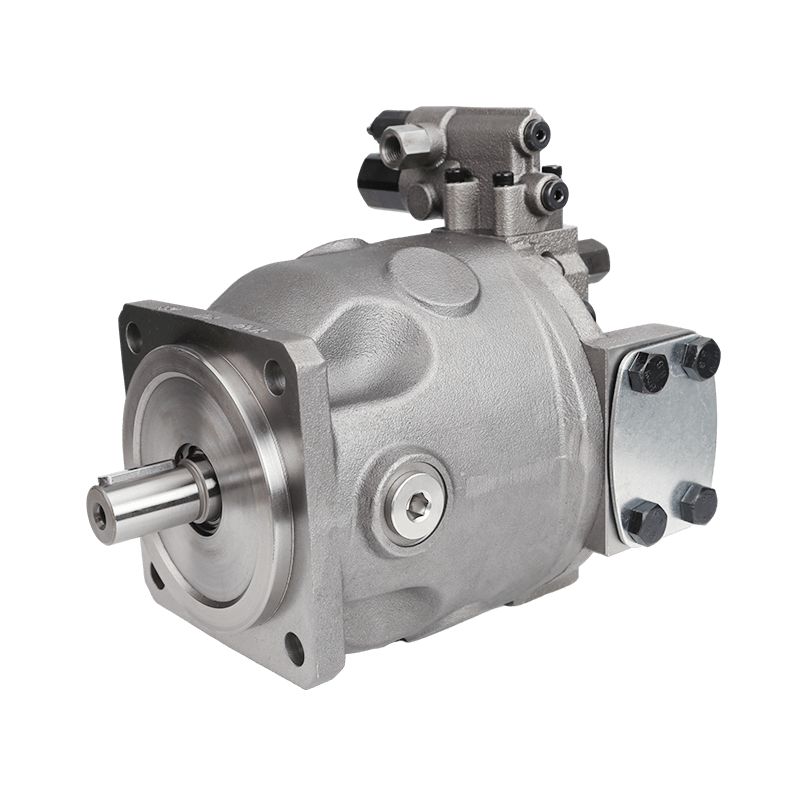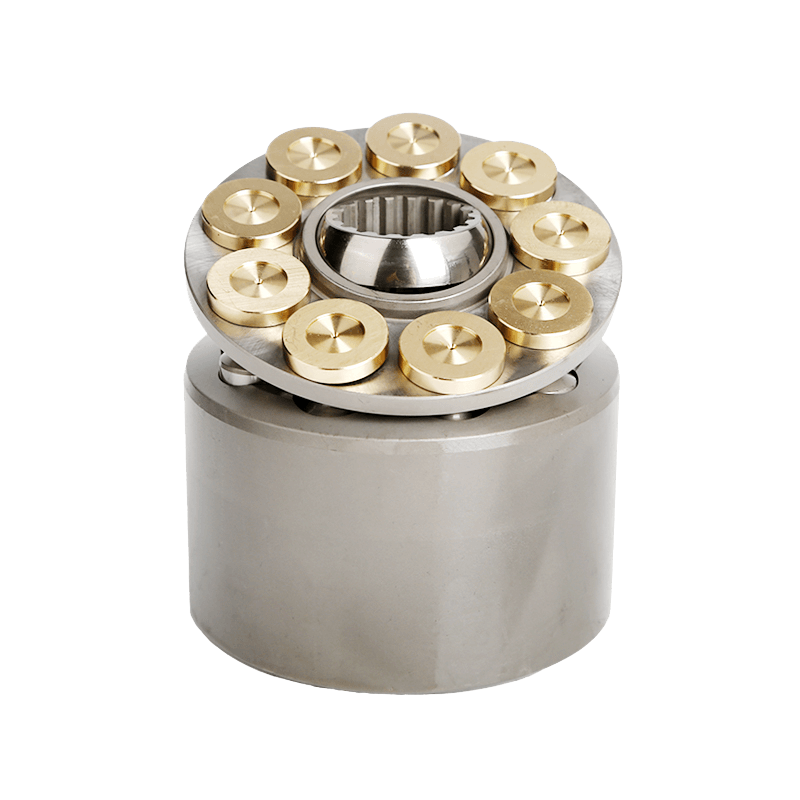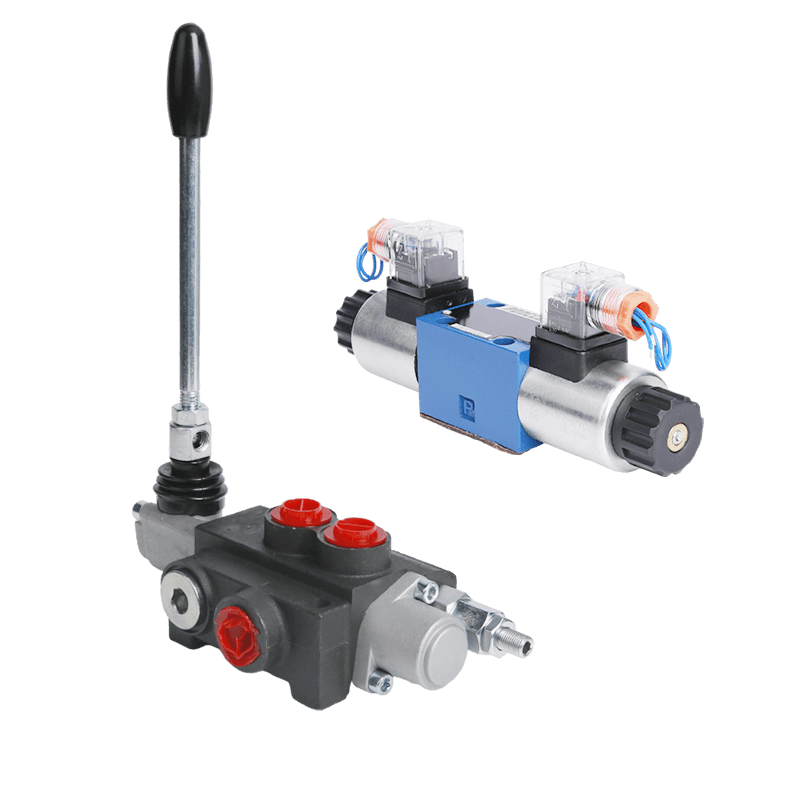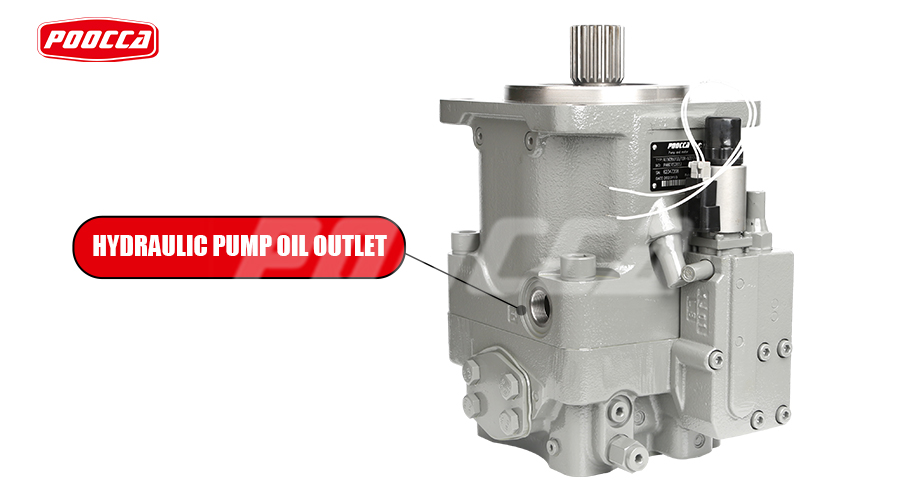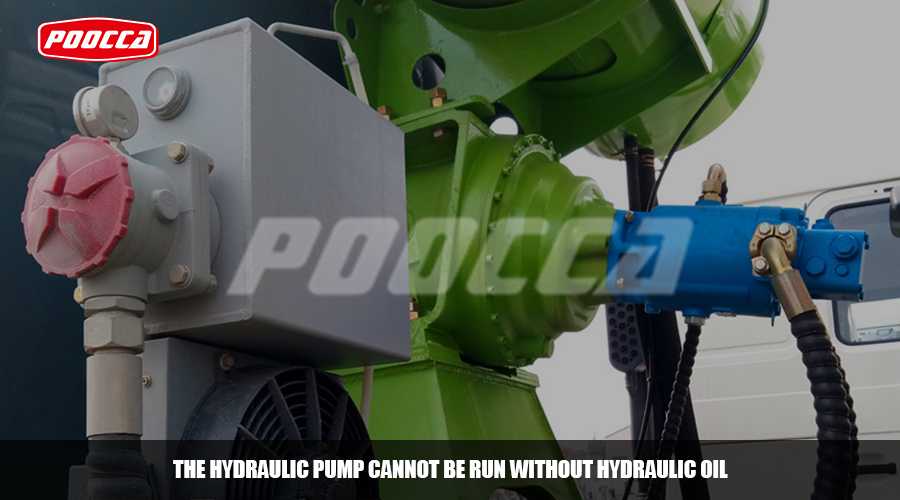Understanding the Basics of Variable Displacement Pumps
Variable displacement pumps are integral components in hydraulic systems, providing exact control over fluid flow and pressure. It is essential to grasp the core principles and operational mechanisms of these pumps to enhance their performance and efficacy.
What is a Variable Displacement Pump?
Variable displacement pumps are hydraulic pumps that enable the adjustment of fluid flow by varying the displacement of the pump. The displacement refers to the volume of fluid transferred per revolution of the pump’s input shaft. This adjustability allows for dynamic control over flow rates, making variable displacement pumps highly versatile in various applications.
The Role of Piston Strokes
The operation of a variable displacement pump involves utilizing piston strokes to regulate fluid flow. As the pistons move within the pump, they create varying levels of pressure, which directly impacts the flow rate. By adjusting the length and frequency of piston strokes, operators can precisely control the amount of fluid being delivered, catering to specific operational requirements.
The Importance of Flow Control
Flow control is a critical aspect of variable displacement pumps as it directly influences system performance. Whether it’s maintaining a consistent flow rate or adjusting it based on changing demands, precise flow control ensures optimal functionality. This capability makes variable displacement pumps invaluable in applications where varying load requirements are common.
The Principle Behind Variable Displacement
The principle governing variable displacement pumps revolves around manipulating the pump’s internal components to regulate fluid output effectively.
Swashplate and Piston Interaction
At the core of a variable displacement pump lies the interaction between its swashplate and pistons. The swashplate plays a pivotal role in controlling piston movement, thereby influencing fluid output. By altering the angle of the swashplate, operators can modulate piston strokes, subsequently adjusting fluid flow to meet specific operational needs.
Adjusting the Pump’s Displacement
The ability to adjust a pump’s displacement while maintaining consistent rotational speeds is a defining feature of variable displacement pumps. This flexibility allows for seamless adaptation to changing system requirements without compromising overall performance.
Mastering the Controls of a Rexroth Variable Displacement Pump
Rexroth variable displacement pumps are renowned for their advanced control features, offering unparalleled precision and adaptability in hydraulic systems. Mastering the controls of these pumps is essential for harnessing their full potential and achieving optimal performance.
Introduction to Rexroth Variable Displacement Pump Controls
Key Features and Benefits
Rexroth variable displacement pumps boast a range of key features that set them apart in the industry. With variable displacement pump technology at its core, Rexroth pumps offer exceptional flexibility in adjusting fluid flow to meet specific operational requirements. The ability to precisely control flow rates makes these pumps highly versatile, catering to diverse applications with varying demands.
One of the significant benefits of Rexroth variable displacement pump controls is their seamless integration with modern hydraulic systems. The compatibility and interoperability of these controls ensure smooth operation within complex hydraulic setups, enhancing overall system efficiency.
Control Options and Their Applications
Rexroth’s control options encompass a comprehensive suite of functionalities designed to address various operational needs. From pressure-compensated controls to flow and horsepower adjustments, operators have access to a diverse range of control options tailored for specific applications.
The pressure-compensated control feature enables automatic adjustment of fluid flow based on changes in system pressure, ensuring consistent performance even under fluctuating load conditions. This capability is particularly advantageous in applications where maintaining a steady flow rate is critical for operational stability.
In addition, the availability of flow and horsepower control options provides operators with the flexibility to fine-tune fluid delivery according to specific power requirements. Whether it involves optimizing flow for enhanced efficiency or modulating horsepower output for varying workloads, Rexroth’s control options cater to a wide spectrum of hydraulic system demands.
Step-by-Step Guide to Adjusting Rexroth Controls
Pressure-Compensated Control Adjustment
Adjusting the pressure-compensated control on a Rexroth variable displacement pump involves precise calibration to align with the system’s pressure variations. By accessing the designated control interface, operators can fine-tune the pressure settings to ensure consistent fluid flow regardless of external load changes. This step-by-step adjustment process empowers operators to maintain optimal system performance under dynamic operating conditions.
Flow and Horsepower Control Options
The process of adjusting flow and horsepower controls on a Rexroth variable displacement pump entails meticulous calibration based on specific application requirements. Operators can navigate through the intuitive control interface to modify flow rates or adjust horsepower output as needed, ensuring seamless adaptation to varying operational demands.
By mastering these step-by-step adjustments, operators can effectively optimize Rexroth variable displacement pump controls according to unique system specifications, thereby maximizing overall performance and efficiency.
Poocca hydraulic manufacturer sells Rexroth variable displacement pump A4VG, A10VSO, A7VO, A11VO piston pump
A4VG series: This series includes A4VG28, A4VG40, A4VG56, A4VG71, A4VG90, A4VG125, A4VG180, A4VG250 and other models.
A10VSO Series: Models in this series include A10VSO10, A10VSO18, A10VSO28, A10VSO45, A10VSO71, A10VSO100, A10VSO140 and A10VSO180.
A7VO series: This series includes A7VO28, A7VO55, A7VO80, A7VO107, A7VO160 and other models. These open circuit axial piston pumps are compact, efficient and suitable for a variety of hydraulic applications.
A11VO Series: Models in this series include A11VO40, A11VO60, A11VO75, A11VO95, A11VO130 and A11VO190. These inclined axis variable displacement pumps offer high power density and smooth operation.
AA4VG series: This series includes AA4VG28, AA4VG40, AA4VG45, AA4VG56, AA4VG71, AA4VG90, AA4VG125 and other models. These variable displacement axial piston pumps are suitable for industrial and mobile applications.
Navigating Parker Variable Displacement Pump Controls
Parker variable displacement pumps are renowned for their innovative features and robust design, offering exceptional control mechanisms that cater to diverse hydraulic system requirements.
Understanding Parker Variable Displacement Pump Features
Unique Control Mechanisms
Parker variable displacement pumps incorporate unique control mechanisms that set them apart in the industry. The pumps are equipped with advanced servo controls that enable precise adjustment of fluid flow and pressure, ensuring optimal performance in varying operational conditions. The incorporation of cutting-edge technology in the control mechanisms enhances the pumps’ adaptability, making them suitable for a wide range of applications with distinct flow and pressure demands.
Advantages of Parker’s Design
The design of Parker variable displacement pumps encompasses several advantages that contribute to their superior functionality. With a focus on efficiency and reliability, these pumps are engineered to deliver consistent performance while minimizing energy consumption. The robust construction and durable components ensure longevity, making Parker pumps a cost-effective solution for long-term hydraulic system operations. Additionally, the user-friendly interface simplifies control adjustments, enabling operators to optimize pump settings with ease.
Practical Adjustments for Parker Pumps
Optimizing Pressure and Flow
Optimizing pressure and flow in Parker variable displacement pumps involves a systematic approach to fine-tune the pump’s performance according to specific application requirements. By leveraging the intuitive control interface, operators can adjust pressure settings to maintain consistent fluid delivery under varying load conditions. Simultaneously, precise flow adjustments can be made to align with changing operational demands, ensuring efficient system functionality across different operating scenarios.
Troubleshooting Common Issues
In the event of common issues arising during the operation of Parker variable displacement pumps, troubleshooting becomes essential to restore optimal performance. Operators can refer to comprehensive troubleshooting guides provided by Parker to address common issues such as fluid leakage, irregular flow patterns, or abnormal pressure fluctuations. By following systematic troubleshooting procedures, operators can identify and rectify issues promptly, minimizing downtime and sustaining uninterrupted hydraulic system operations.
Poocca provides Parker’s various series of variable displacement pumps PV PVP PAVC T6, etc. to meet the requirements of various hydraulic systems.
PV series: PV series includes PV016, PV020, PV032, PV046, PV063, PV080, PV092, PV140, PV180 and other models.
PVP Series: Models in the PVP Series include PVP16, PVP23, PVP33, PVP41, PVP48, PVP60, PVP76, PVP100 and PVP140.
PAVC series: PAVC series includes PAVC33, PAVC38, PAVC65, PAVC100, PAVC160 and other models. These variable displacement axial piston pumps feature a swash plate design and are suitable for both open and closed circuit applications.
T6 Series: Models in the T6 Series include T6C, T6D, T6E, T6CC, T6DC, T6EC, T6ED, T6EE and T6EG. These vane pumps operate efficiently and are available in a variety of displacement sizes to meet different hydraulic system requirements.
VP1 series: VP1 series includes VP1-40, VP1-60, VP1-90, VP1-110, VP1-140 and other models. These axial piston pumps feature a swashplate design and are suitable for applications requiring high pressures and flows.
Optimizing Your Danfoss Variable Displacement Pump
Danfoss variable displacement pumps are renowned for their exceptional performance and innovative control solutions, making them a preferred choice for diverse hydraulic system applications.
Key Characteristics of Danfoss Variable Displacement Pumps
Danfoss’s Innovative Control Solutions
Danfoss variable displacement pumps are equipped with cutting-edge control solutions that enable precise adjustment of fluid flow and pressure. The incorporation of advanced servo controls empowers operators to optimize pump performance according to specific operational requirements. This innovative feature ensures seamless adaptability to varying load conditions, enhancing overall system efficiency and functionality.
Efficiency and Performance
The design of Danfoss variable displacement pumps prioritizes efficiency and performance, delivering consistent and reliable operation while minimizing energy consumption. With a focus on sustainability, these pumps offer superior efficiency in fluid delivery, contributing to reduced operational costs and environmental impact. The robust construction and durable components further enhance the pumps’ longevity, ensuring prolonged service life in demanding hydraulic system environments.
Maximizing Danfoss Pump Performance
Fine-Tuning Control Settings
Maximizing the performance of Danfoss variable displacement pumps involves fine-tuning control settings to align with specific application demands. Operators can leverage the intuitive control interface to adjust pressure, flow rates, and other parameters with precision, ensuring optimal pump operation under varying operating conditions. By fine-tuning control settings according to unique system specifications, operators can achieve maximum efficiency and performance from Danfoss pumps.
Maintenance Tips for Longevity
To sustain the longevity of Danfoss variable displacement pumps, regular maintenance is essential. Implementing a proactive maintenance schedule that includes routine inspections, lubrication of moving parts, and monitoring fluid levels is crucial for preserving pump functionality. Additionally, adherence to manufacturer-recommended maintenance practices and timely replacement of worn components contribute to prolonged pump lifespan and uninterrupted system operations.
Danfoss variable pumps are available in series 45, series 90, series 20, series 51, and series 40 hydraulic pumps. For more detailed information, please contact poocca hydraulics.
Practical Tips for All Variable Displacement Pumps
Variable displacement pumps are integral components of hydraulic systems, and their efficient operation is essential for optimal performance. Implementing general maintenance practices and troubleshooting techniques can significantly enhance the functionality and longevity of these pumps.
General Maintenance and Troubleshooting
Routine Check-ups and Cleaning
Regular maintenance routines are vital for ensuring the smooth operation of variable displacement pumps. Conducting routine check-ups, including inspecting for leaks, monitoring fluid levels, and examining the overall condition of the pump, helps in identifying potential issues early on. Additionally, thorough cleaning of external surfaces and components prevents the accumulation of debris or contaminants that could affect pump performance.
Identifying and Solving Common Problems
Incorporating a proactive approach to troubleshooting common issues is crucial for maintaining uninterrupted pump operations. Operators should be well-versed in recognizing common problems such as fluid leakage, irregular flow patterns, or abnormal pressure fluctuations. By promptly addressing these issues through systematic troubleshooting procedures recommended by the manufacturer, operators can prevent potential downtime and ensure consistent pump functionality.
Enhancing Pump Efficiency and Lifespan
Best Practices for Daily Operations
Adhering to best practices during daily operations contributes to the overall efficiency and lifespan of variable displacement pumps. This includes monitoring system parameters such as pressure, flow rates, and temperature regularly to detect any deviations from normal operating conditions. Additionally, ensuring proper lubrication of moving parts and adherence to recommended operating parameters optimizes pump performance while minimizing wear and tear.
Upgrading and Replacing Components
As variable displacement pumps age, certain components may experience wear or degradation over time. It is essential to consider upgrading or replacing these components according to the manufacturer’s guidelines to maintain optimal pump functionality. By staying proactive in component maintenance and replacement, operators can prolong the lifespan of variable displacement pumps while avoiding potential system failures.
By integrating these practical tips into regular maintenance routines, operators can effectively optimize the performance and longevity of variable displacement pumps across diverse hydraulic system applications.

